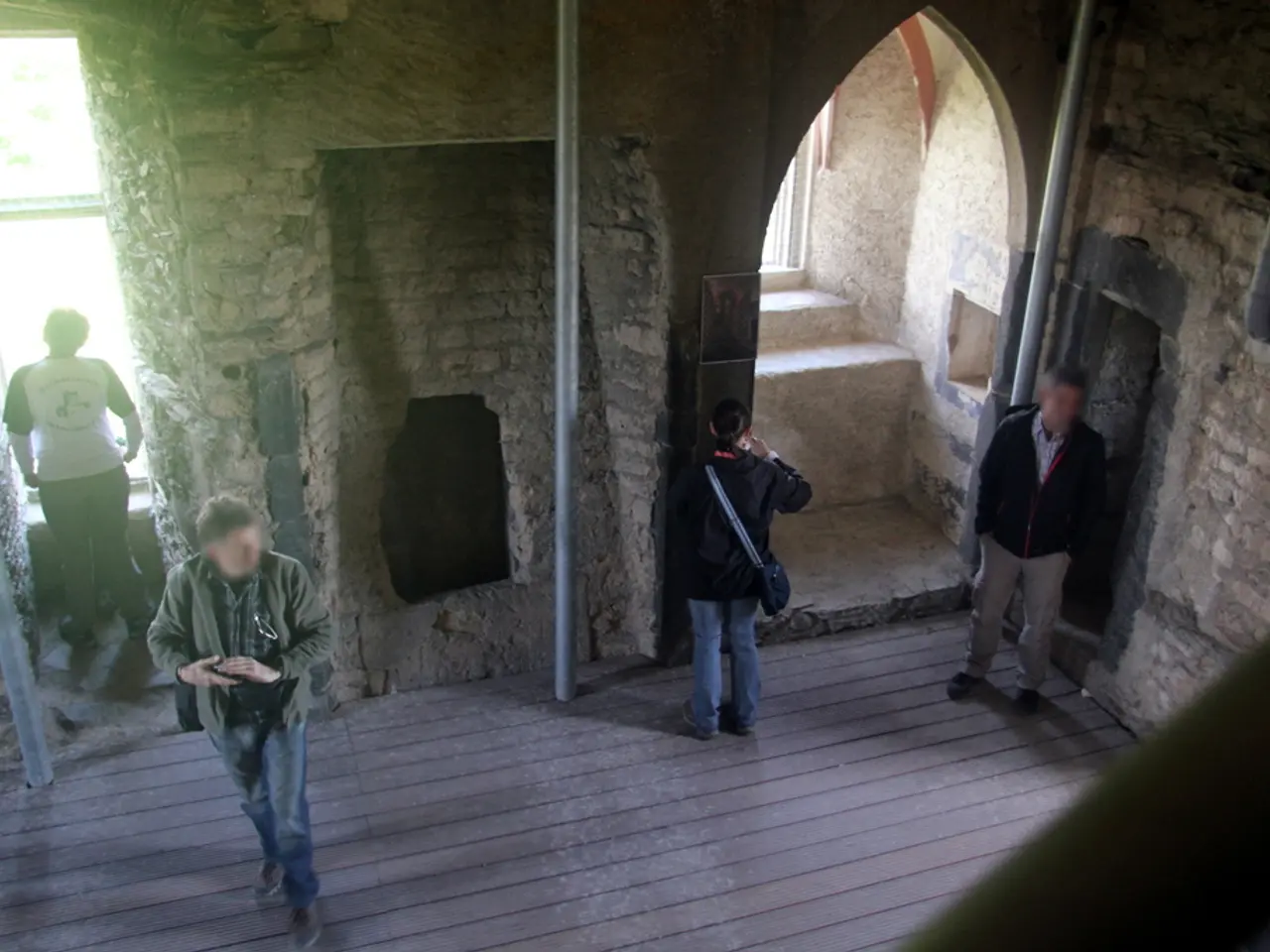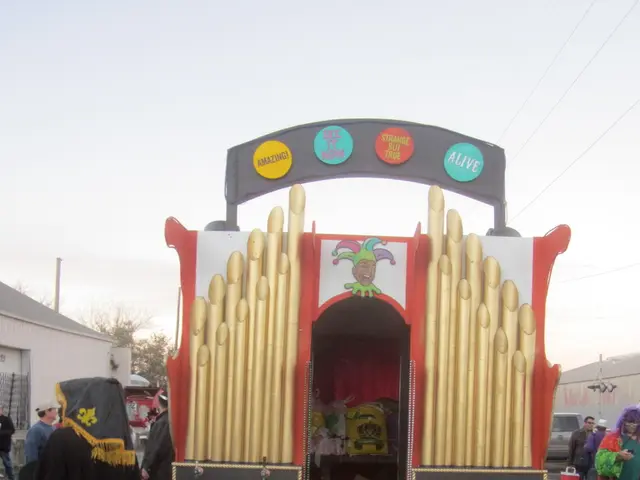Exploration Guide for Kampot, Cambodia's Hidden Caverns: Activities and Sights to Experience
Exploring Historical Cave Temples in Kampot, Cambodia
Nestled in the rolling hills of southern Cambodia, the province of Kampot offers a unique blend of natural beauty and rich history. One such destination is Phnom Sorsia, a Buddhist hill complex that serves as a peaceful retreat where nature and faith come together.
Phnom Sorsia, located about 13.5 km southeast of Kampot and near Kep's White Horse Roundabout, can be reached via NH33. The site is home to several limestone caves, including the famous White Elephant Cave and the Bat Cave. A staircase ascends the hillside to a serene temple at Phnom Sorsia, with paths leading to the caves from there.
Visitors to Phnom Sorsia can explore the stalactites and stalagmites within the caves, marveling at the natural rock formations that adorn the caverns. The temple at Phnom Sorsia showcases pre-Angkorian architecture, adding to the site's historical significance.
Another significant historical cave temple in the area is Phnom Chhngok, one of Cambodia's oldest surviving religious sites, dating back to the 7th century. Located 14.6 km from Kampot via AH123/NR33, Phnom Chhngok is a pre-Angkorian temple built within a natural limestone cave, dedicated originally to the Hindu god Shiva. The site is distinctive because it integrates an ancient brick temple inside a majestic limestone cavern decorated with stalactites and natural rock formations.
Phnom Chhngok and neighboring cave temples such as those in Phnom Kampong Trach and Phnom Srei contribute to Kampot’s identity as a region rich in Khmer heritage. After centuries of neglect and natural overgrowth, Phnom Chhngok was rediscovered in the early 20th century and is now considered a key monument in Cambodian religious and architectural history.
The Kampong Trach cave network, both a geological wonder and a site of cultural significance, includes partially submerged sections, allowing visitors to explore by boat through calm, clear waters. This network of interconnected limestone caves, stalactites, stalagmites, and unique rock formations is a must-see for any traveler visiting the area.
Phnom Srei, also known as "Woman's Hill," is part of a paired complex with Phnom Pros, "Man's Hill." This temple complex, located in the rolling hills of Kampong Siem District, is easily reached by scooter or bicycle. Visitors can explore old temples and scattered ruins, set against a backdrop of lush greenery and distant rice fields.
To fully enjoy a visit to Kampot, it is recommended to pack essential items such as light, breathable clothing, sturdy walking shoes, sun protection, sunscreen, insect repellent, and a reusable water bottle.
In summary, the cave temples around Kampot—especially Phnom Chhngok—represent ancient spiritual centers embedded in natural limestone caves, reflecting Cambodia's deep historical roots in Hindu and Buddhist traditions and showcasing unique pre-Angkorian architecture and religious culture. These sites are a testament to the rich cultural heritage of Kampot and a must-visit for anyone interested in exploring the history and beauty of Cambodia.
[1] "Phnom Chhngok Cave Temple, Cambodia." World Heritage Encyclopedia. https://www.worldheritageencyclopedia.org/en/phnom-chhngok-cave-temple
[2] "Phnom Chhngok Cave Temple, Kampot." Cambodia Travel. https://www.cambodiatravel.com/phnom-chhngok-cave-temple-kampot.html
[3] "Phnom Chhngok Cave Temple." Cambodia-Guide.com. https://www.cambodia-guide.com/phnom-chhngok-cave-temple.html
[4] "Phnom Chhngok Cave Temple." Cambodia Travel Guide. https://www.cambodiatravelguide.com/phnom-chhngok-cave-temple.html
[5] "Phnom Chhngok Cave Temple." TripAdvisor. https://www.tripadvisor.com/Attraction_Review-g297537-d3828618-Reviews-Phnom_Chhngok_Cave_Temple-Kampot_Kampot_Province.html
- Travelers exploring the historical cave temples in Kampot, Cambodia, such as Phnom Chhngok, can immerse themselves in a unique blend of natural beauty, rich ancient spirituality, and pre-Angkorian architecture.
- To capture the essence of Kampot's lifestyle, one should consider traveling to its cave temples, which not only offer stunning natural wonders but also showcase the region's deep historical roots in Hindu and Buddhist traditions.




